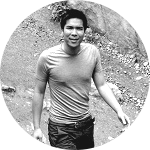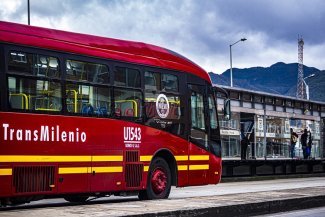Mailuu-Suu is a small town of 20,000 inhabitants in Kyrgyzstan, a former member of the Soviet Union. In 2006, it was found to be the fourth most polluted site in the world by the Blacksmith Institute.
The reason? Between 1948 and 1968, over 10 million tonnes of uranium were extracted from the surrounding mountains and sent to Moscow, to feed the Soviet atomic programme. Over the course of those 20 years, two million cubic metres of radioactive mining waste were stored around the town, creating a real environmental disaster.
Numerous studies conducted during the 2000s have identified the seepage of radioactive components into the local river. The level of heavy metals and radionuclides in the town’s tap water, in homes and public buildings, has on occasions been thirty times higher than the limit set by the European Union.
In an interview given to RFL, Rarmen Toychev, a scientist from the Kyrgyz Academy of Sciences, stated that there is a direct link between the radioactivity found in Mailuu-Suu and a number of health conditions: “In 98 per cent of cases, people living close to the storage sites suffer from thyroid and liver diseases.”
At the same time, however, Tchynybekov Nourlan, co-director of the Mailuu-Suu hospital, maintains that the statistics on the illnesses observed in Mailuu-Suu indicate that the radioactivity has no impact on the local people’s health.
The effects of the nuclear industry is still a matter of debate in this town.
The World Bank has financed works to reinforce and relocate the most exposed storage sites. These measures have, however, fallen short of durably securing all the areas concerned.
On 30 March 2017, the European Bank for Reconstruction and Development (EBRD), the European Commission and the government of Kyrgyzstan met in Bishkek to reach an agreement designed to tackle the threat posed by the legacy of Soviet uranium production. But the funding still has to be raised and the study on Mailuu-Suu will not be completed until the end of 2018.
In the meantime, the locals live as best they can with this legacy and the threat hanging over them.

The river running through Mailuu-Suu supplies 6 million people across Kyrgyzstan, Uzbekistan and Kazakhstan with water.
Various radioactive mining waste disposal sites are located on the very bank of the river that flows from the surrounding mountains.
In some spots, the levels of radionuclides in the river water are 200 times higher than the level recommended by the World Health Organisation.
Seismic activity in the region is high, and landslides and mudslides are commonplace. A number of the storage sites, located dangerously close to the river, risk contaminating the watercourse supplying several million people across Kyrgyzstan and Central Asia. Several incidents have already been recorded.

A flock of sheep crossing tailings site number 18, located within metres of the river, upstream from Mailuu-Suu.
A study conducted in 2010 by the Central Asia-Caucasus Institute & Silk Road, an American-Swedish think tank, found a high level of radioactivity at this spot.
Given the significant erosion and its proximity to the river, the facility was supposed to be moved to a more secure location. But according to a 2013 World Bank report, “Because of the delays in the project progress, the financial situation and the fact that the radiation survey did not monitor elevated radiation levels and trial pits could not locate any mine tailing materials, the decision was made by the client that the contaminated material of TP 18, if at all present, would not be hauled to TP 6 but instead direct access and fluvial erosion from the river could be prevented by additional protection measures.”

Born in Mailuu-Suu, Islam Altymychev is in charge of radioprotection and the measurement of radioactivity levels in the town.
Every three months, Islam Altymychev tests the river water and the various storage sites. He assures Equal Times that the level of radioactivity is below the safety threshold of one microsievert per hour.
“Recent readings show that some of the houses in the town, the stone ones, were built with materials brought from the uranium mines; the radioactivity in these houses is almost above acceptable parameters but still within the safety limits.”
The authorities have introduced protective measures over recent years, but they are not sufficient. Altymychev’s situation is emblematic of the lack of resources: during his holidays, he has to work for the town’s green space maintenance service to supplement his salary, which is not enough to live on.

Children playing on Pravoberejnaya Street in the centre of Mailuu-Suu.
In 2010, a study at this precise spot gave a reading of 30 microsieverts per hour, which is 30 times the level of radioactive exposure recommended by the European Union.
Many inhabitants of Mailuu-Suu say they are not concerned about the radioactivity in the environment. Like Murzayem, a 63-year-old with four grandchildren, some believe that those born in Mailuu-Suu are immune to it. “It’s a problem for you, those who come from outside. You shouldn’t stay too long,” she laughs.

Sabira Kotchibekova, aged 44, lives in the hills of Mailuu-Suu, a few hundred metres from two storage dumps.
Sabira Kotchibekova watches over the cattle that grazes freely in the mountains, and sometimes on the radioactive sites themselves. The safety fences were taken down long ago to be used elsewhere.
“I used to have a house near one of the dumps,” she explains. “It was destroyed in a landslide. But I’m not afraid, not of the radioactivity nor the landslides.”
On probing a little further, some of the locals express more nuanced emotions: “Of course we are afraid,” said a taxi driver, just a few minutes after saying his immune system was too strong to be affected. “But where else can we go?”

Svetlana Vladiminova leads the religious ceremony at the Orthodox church in Mailuu-Suu.
On that Sunday, only three people attended the service given at the church. The descendants of the Russians, Tatars and Ukrainians who came to work in Mailuu-Suu are becoming increasingly rare.
“The fall of the Soviet Union was hard for many people,” recounts Svetlana Vladiminova. “After being sent here to build this town, over fifty years before, and after two or three generations, many people went back to their countries of origin across the USSR. But some didn’t have that option, as they had no relatives left in their own country.”

Two members of the same family working in the largest bakery in Mailuu-Suu.
The bakery produces one tonne of bread a day, ten times less than the amount produced every day during the Soviet era. For 50 years, the town was one of the flagships of Soviet production, and the wages there were high. Many of the locals are nostalgic about that bygone era.
Now, young people leave to go and find work in neighbouring Kazakhstan or Russia. Just hours before his departure for a Russian town several thousand kilometres from Mailuu-Suu, Eminov (his name has been changed) tells us: “There are no jobs here now. I’m going to Siberia for work. I don’t know for how long.”
He pauses and then goes on to say: “But I will come back. I will found a family here: my life is here in Mailuu-Suu.”











